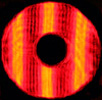November 25,
2011: Not up to my standards - 16", Part 1
Well, this example shows quite nicely what a mediocre mirror is.
The
client complained of..... well, he didn't complain, but he said the
mirror was merely "OK". He wanted a better idea of what was going
on.
First I tested the elliptical flat, which turned out to be quite good.
Next
came the primary. Foucault testing showed a good amount of
roughness on the optical surface, as shown in the images below.
Also seen is a slight zone near the center of the mirror, but
likely behind the secondary's shadow.
The "roughness" is seen in
the shadows - they look blotchy, and "not smooth" in general. The
mirror appears to have "texture" over most of its surface, and this is
the roughness. It may reduce the image contrast in critical
observing, and also can affect test results when high precicion is
desired. Roughness is observed over most of the optical surface,
and was likely caused by a heavy-handed optician, working in a hurry
with a hard pitch lap. Edge condition was OK, but not perfect,
with a brighter diffraction ring on one side of the mirror than the
other, though this is quite a minor defect even for a very good mirror.
The figure and roughness are of much greater concern.
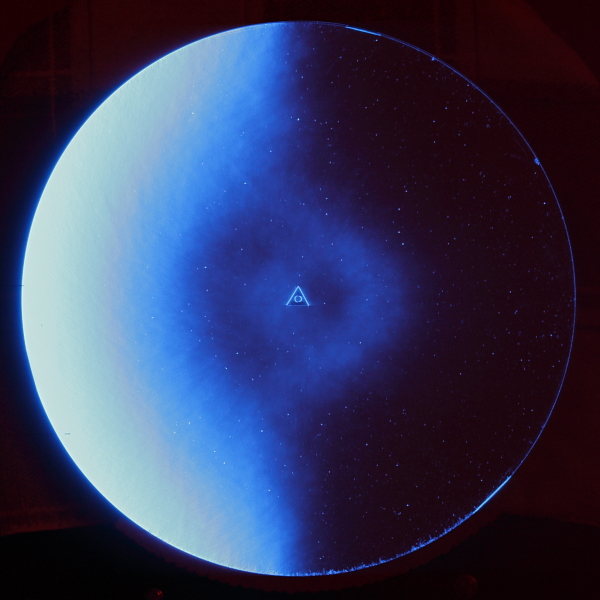
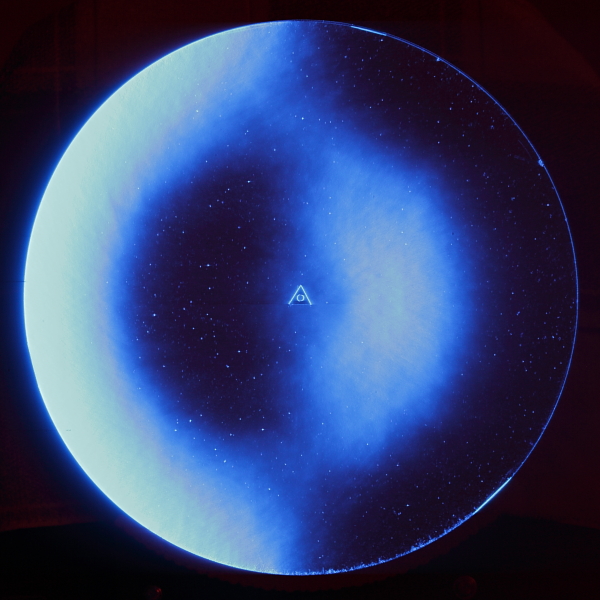
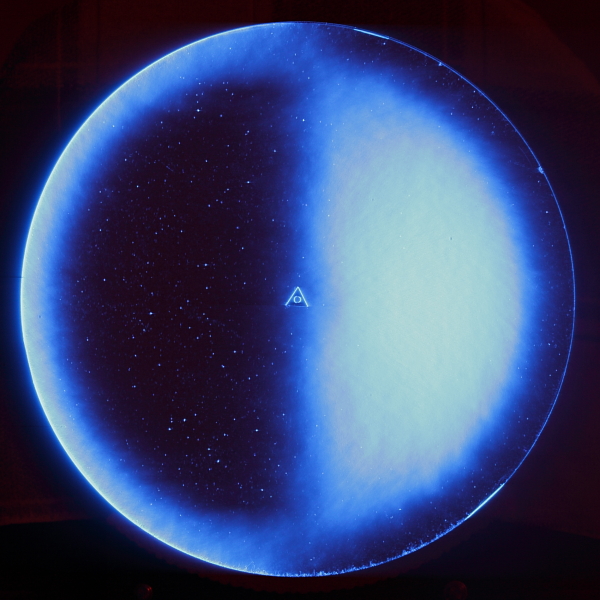
Further
testing showed the mirror to have a very good figure of revolution, but
the figure was at best 1/4-wave on the glass, or 1/2-wave on the
wavefront. I know from experience that this is far too much error
to be caused by the surface roughness affecting the Foucault readings.
The
error plot below shows the error in the figure, as measured with
Foucault testing. It generally looks like overcorrection.
Also note the transverse error of 4.16 (slope error relative to
the airy disk size), which indicates stars will definitely not be at
their sharpest.
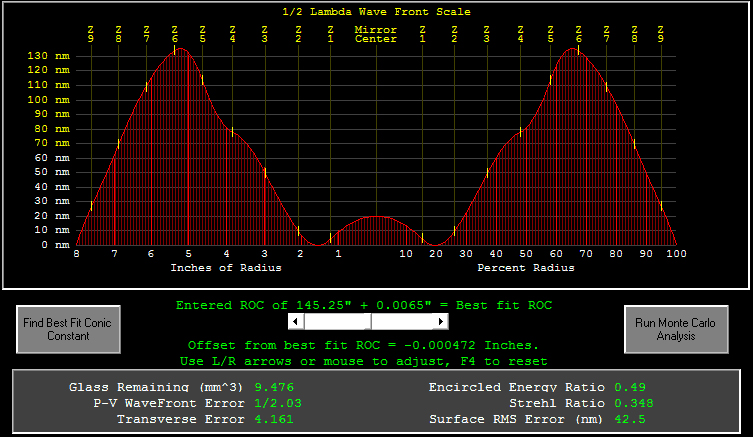
Obviously,
refiguring and smoothing work is recommended, to which the client
agreed. It will be done when I can work it into my schedule.
Please check back for future installements of "In
the Shop".
Mike
Lockwood
Lockwood Custom Optics


